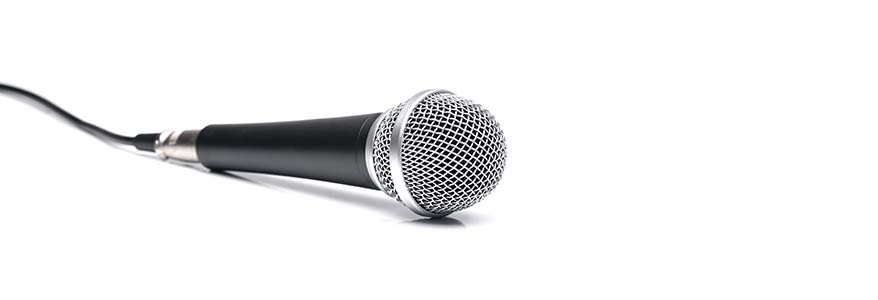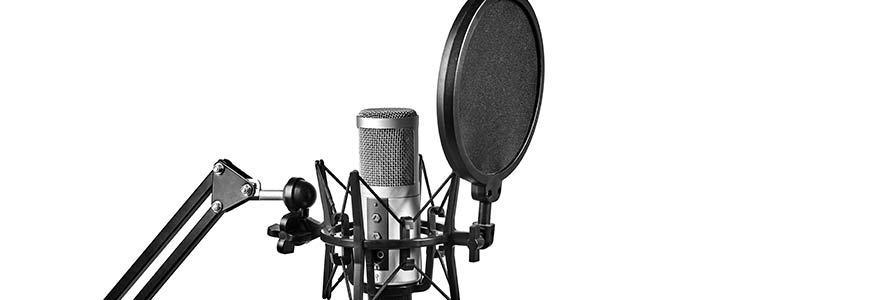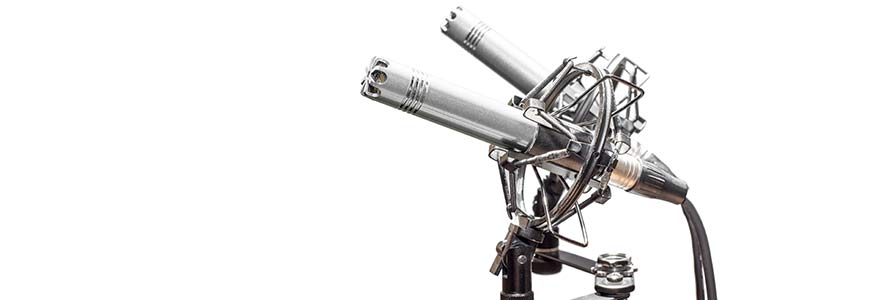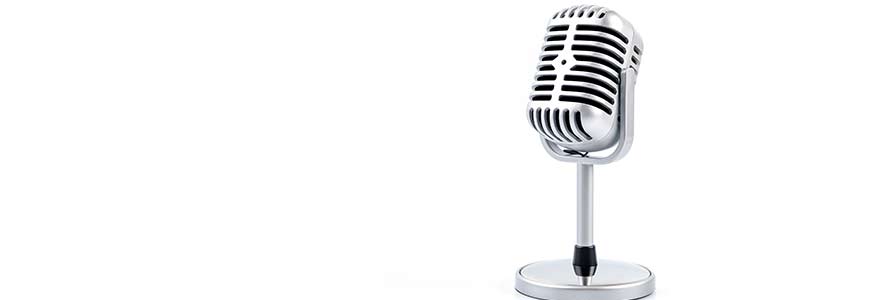Software by professionals for professionals
Recording your music professionally is the first step to your breakthrough – and to enhancing the sound of instruments, voice and expression too. You need to make sure the audio recording is at the optimum level of quality. There's a range of potential problems such as noise, tinny sounds and reverb, but these can be eliminated with a professional recording program. Below you'll find the best tips and tricks on how to professionally record and edit your music.
What are audio recordings and what tools do you need?
When you want to record, edit and share your own own, music or entire ensembles, the right software and tools gives your audio recordings the advantage. The analog signals of your voice or instruments are digitally converted so that they can then be edited. This is done by a audio recording program that captures and converts the noise of sounds, music and speech.
Digital or analog audio recording
- which is better?
An analog recording translates the signals captured by the microphone into analog vibrations, for example on a continuous tape. The catch with analog recordings is the sound quality: noise, distortion or background noise are standard. These can be removed digitally, so it makes sense to start directly with the digital recording. Analog signals, i.e. your voice and/or your instruments, are digitized during recording using an analog/digital converter (this is also known as analog to digital conversion) and can then be processed further.
Note: In order to be able to edit the audio recordings with maximum flexibility, you should set a bit rate as high as possible right from the start. The bit rate is the respective output quantity of the information units of an audio file: A fixed volume value is assigned to the sound. In addition to this, a digital audio file consists of a certain sample rate, which is specified in kilohertz – standard files have values of 16 bits and 44.1 kilohertz. This relates to the sound quality of an audio CD. The higher the bit rate, the better the recording quality and the better the file can be edited.
Multi-track recording
With an audio recorder you can record your music and customize your editing workflow the way you want. Multiple sound tracks, which can be recorded with audio recording software SOUND FORGE Pro 12, are required if you want to play in a band or as a one-person project with various instruments, vocals, and effects.
Equipment
Whether you just want to record your own voice or a whole ensemble, you'll always need the following technical equipment:
- Microphone
- Sound card (usually integrated in your computer) or
- External audio interface via USB or FireWire interface
- Microphone cable with XLR/Canon connector
- Closed headphones to check the recording
Try to use the highest quality technical equipment, where possible. You'll notice the difference in recording and processing later.
Internal or external sound?
The sound card integrated in a PC or Mac works fine for occasional, non-professional audio recordings. But if you want to avoid delays during recording and get the best sound results possible, you need a separate audio interface. There are internal solutions for stationary PCs and external solutions for working with notebooks. Internal audio interfaces, in particular, offer high speeds without delays and excellent sound.
How to make your audio recordings perfect
The better the input signal, the higher the quality of your recordings. You can manipulate the recordings after the fact in almost any way you can think of, but you can't fundamentally improve them – so take care when recording audio. Audio interfaces with microphone input and headphone jack are a plus. If you want to record guitar and/or bass, an instrument input is indispensable. This allows you to get a much more multi-faceted sound from your audio recording.
These factors also influence the sound recording:
- Quality of microphone
- Distance from microphone
- Room acoustics
- Operation of the audio software
Choosing the right microphone is crucial for your audio result. You shouldn't spare on quality here, and you should also pay attention to a few features. The microphone with which you record your sound should always have what's known as a pop protection. This is a solid kind of material that's stretched over the microphone and ensures that explosive sounds such as B, P, T, G and K can be recorded with the best possible sound. Vibrations can also be prevented by a microphone shock mount.
The recording space also plays a role: small, low-ceilinged rooms are better when using an audio recorder. High-ceilinged, large rooms reverberate too strongly and there is a danger that you will record music that sounds metallic and then cannot be processed properly at a later point. Carpeting has a clear advantage over stone or wood flooring and ideally, windows should be covered and made soundproof.
And in terms of acoustic noise, when it comes to sound recording, absolute silence is the order of the day. Turn off electronic devices like fridge, lamps and mobile phones and don't forget to deactivate the speakers on your PC or notebook, since feedback noise can be a risk.
Tricks for recording and editing music
Tricks und Kniffe
Control optimum levels during recording, then optimize sound and customize it to your needs, add effects such as reverb or echo – all this can be done with just a few clicks using the appropriate audio recording software. With SOUND FORGE Pro 12, you can simply open a previously recorded audio file in the browser and edit it anywhere.
Important: When recording, make sure you save tracks and files in a way that you can easily find them for editing. When saving, give the track a unique name. You can also use markers and regions in your Sound Forge Pro audio software to help you find specific parts of your recording
For editing, play back all or part of the recording in SOUND FORGE Pro 12 and optimize it with a virtual equalizer. To do this, mark the position in question with the mouse and select a sound setting. You can then insert effects, move areas or entire recordings or blend them – simply by marking the places and moving the mouse to the desired position or to the selected function.
To successfully record and edit audio, numerous criteria play a role. The equipment and recording software used all enable you to get even more out of your audio recording. A high quality recording is key to the process – your recordings can then be edited and transformed into top quality tracks using professional audio software.







